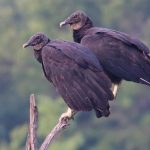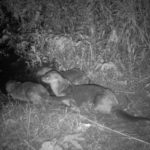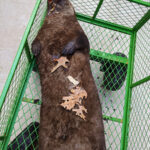One of the primary missions of this web site is to document the unique and unusual as it relates to wildlife living here in the Dallas/Fort Worth metroplex. One way we do this is by searching out and photographing seldom seen animals. But, we are also interested in recording instances of rare and out-of-the-ordinary behaviors–even as they involve our more common wildlife. Both efforts serve to create a better understanding of how and why wildlife exists in urban and suburban areas.

Often, the best of these types of observations come from members of the audience of this website. Periodically we are contacted by people who just happen to be in the right place at the right time to record something really special. We are always grateful when these folks choose to share their remarkable wildlife photos, videos, and stories with us.
This past years has been particularly notable in this regard. Hardly a month has gone by without someone sharing a special urban wildlife observation with us. Many of these unique sightings have been noteworthy enough to deserve a broader distribution. To that end I’ve collected some of the best ones here in this blog post to share with you.
We’ll begin with this inspiring Gray Fox observation submitted to us by a nice lady in Kennedale, TX just south of Arlington. To be clear, there is nothing particularly unusual about a Gray Fox sighting in the metroplex. These small canids are actually very common in certain places around the Dallas/Fort Worth area. The thing that makes this sighting special is what it reveals about the Gray Fox’s ability to adapt and persevere.
This is a story about how resilient wildlife can be. It began when I received an email expressing concern for a Gray Fox with a badly injured hind foot. The fox had appeared in this persons backyard, and was clearly struggling. It worried over the wounded appendage until the mangled leg was removed.

We were both very concerned about the fox’s condition. Together, we sought out the advice of a wildlife rehabber who specialized in canids. The rehabber suggested that capture and confinement would likely put too much stress on the injured fox–making a bad situation even worse.
Instead, she recommended that our new friend in Kennedale put out food and water for the fox on a temporary basis. The idea was to help the fox keeps its strength up while it recovered, without having to waste energy trying to hunt. With a little bit of luck, the fox would have time to heal and get used to its new mobility challenges.
Five weeks later I received the follow up email I have been hoping for. The fox had returned to the Kennedale backyard and our wonderful friend was able to get some video of its activity. The food and water provided by this nice lady had helped the fox survive the difficult recovery. The resilient canid now seems fully healed from its injury and well adjusted to its new circumstance.
I collected the pictures and video shared with me into the montage below. One of the snippets even shows the three legged fox climbing a tree! It’s amazing how resilient our urban wildlife can be!
Next, we have these Bald Eagles recorded as they passed through Colleyville in January 2019. In the DFW area, Bald Eagles are typically observed on or near the Trinity River and area lakes.

That’s what makes this sighting particularly unique. Colleyville is situated between the West Fork of the Trinity and Grapevine Lake, but nowhere in its city limits is there a place likely to be prime Bald Eagle habitat. These two eagles appear to be a mated pair traveling from river to reservoir, pausing only briefly in the mid-cities as they make their way.
There was a time, not too long ago when observing a Bald Eagle in the metroplex was a truly unique experience. This becomes less and less the case each year, as the Bald Eagle population continues to increase all across Dallas/Fort Worth. Here’s to hoping that trend continues far into the future!
Mid-cities Bald Eagles – Video best viewed full screen
In North Texas we have many species of snakes. A few are venomous, but most are not. Some, like the Western Rat Snake, the Plain-bellied Water Snake, and the Diamond-backed Water Snake are relatively common all across the metroplex. Others, like the Western Diamondback Rattle Snake, the Masaussaga Rattlesnake, and the Eastern Hognose Snake are only locally common in certain places in Dallas/Fort Worth.
What is special about the photographs below is not just that the snakes pictured are relatively rare, but that they are also small, recently born juveniles.
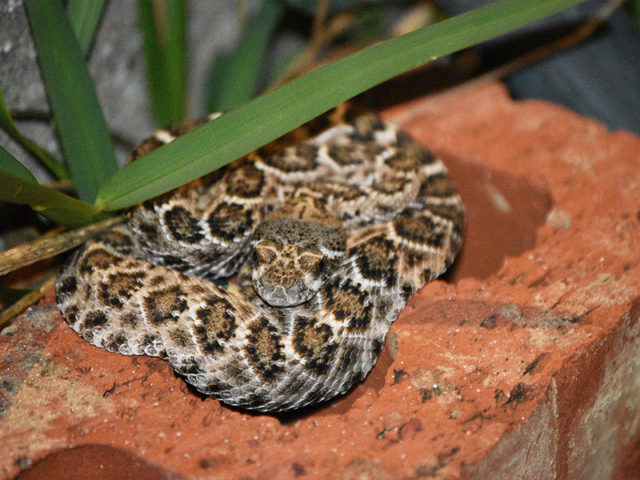
These Diamondback Rattlesnakes were found in a south Dallas County yard. Several of the small venomous juveniles were found over the course of 3 or 4 days. Each is less a foot long. Rattlesnakes are not hatched from eggs, they are live-born. The number of juveniles on this property indicate that there is likely one much larger momma rattlesnake nearby as well.
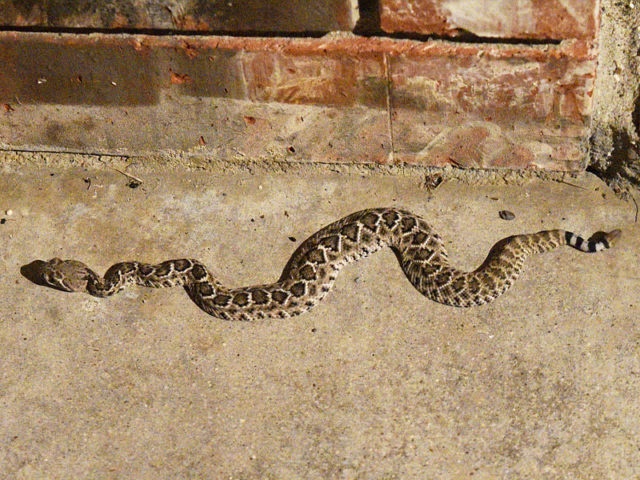
You can read more about Western Diamondback Rattles snakes here: UTA Amphibian and Reptile Diversity Research Center
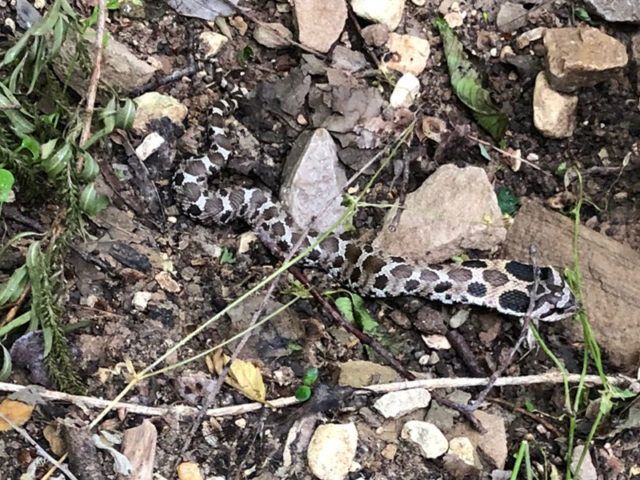
The next juvenile snake is the fascinating Eastern Hognose Snake, also found in Dallas County. This little guys is also roughly 6 inches long. These snakes are harmless to humans, but they technically are venomous. Their venom is targeted for the hognose snake’s primary prey–frogs and other amphibians. It does not typically produce a notable response in people.
The Eastern Hognose Snake is a fascinating reptile with many interesting characteristics and behaviors. This is how they are described in Wikipedia, you can read more by following the link…
The average adult measures 71 cm (28 in) in total length (body + tail), with females being larger than males. The maximum recorded total length is 116 cm (46 in). The most distinguishing feature is the upturned snout, used for digging in sandy soils.
The color pattern is extremely variable. It can be red, green, orange, brown, gray to black, or any combination thereof depending on locality. They can be blotched, checkered, or patternless. The belly tends to be a solid gray, yellow, or cream-colored. In this species the underside of the tail is lighter than the belly
Although H. platyrhinos is rear-fanged, it is often considered nonvenomous because it is not harmful to humans. Heterodon means “different tooth”, which refers to the enlarged teeth at the rear of the upper jaw. These teeth inject a mild amphibian-specific venom into prey, and also are used to “pop” inflated toads like a balloon to enable swallowing. Bitten humans who are allergic to the saliva have been known to experience local swelling, but no human deaths have been documented.

The last juvenile snake in this article is an example of the little-known Masaussage Rattlesnake. These snakes are venomous, so caution is warranted. They are more common west of the metroplex, but occasionally examples are found in Fort Worth’s western suburbs. This tiny juvenile was photographed in Haslet, TX.
The next shared observation is of a Wild Turkey. These big birds are actually very common in certain parts of the metroplex. There has always been a thriving population living in the western reaches of the metroplex. It’s never been unusual to find them west and south of Fort Worth.
In 2005 there was a reintroduction effort on Corp of Engineer land at Lewisville Lake. The initiative was a success, and since then there has been established a sizable and growing population of these birds in this part of the metroplex as well.

So, while its not necessarily unusual to find Wild Turkey in certain places around the metroplex, it IS out of the ordinary to find one in your own backyard just a few blocks away from downtown Fort Worth, such as the one shown in the reader submitted photograph above.
This next shared observation came with a little uncertainty. The video below was recorded in downtown Fort Worth just across the street from the Trinity River. The animal is clearly a member of the weasel family–but it is not obvious from the video exactly what kind mustalid it is.
In North Texas there are two possibilities that fit the parameters of this observation–the American Mink and the North American River Otter. The habitat at this location is appropriate for both, which means it can’t be used to eliminate one or the other. The River Otter is quite a bit larger that the American Mink, but the video does not provide many clues to the scale of the animal. Some wildlife forensics would be necessary to to make a positive ID.
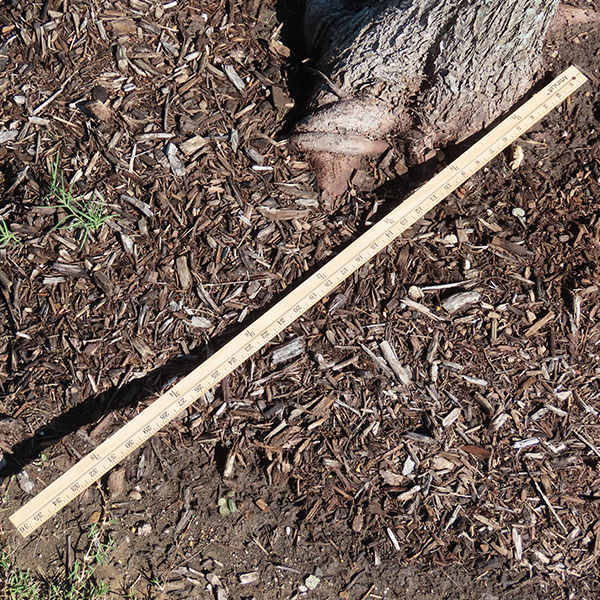
The first step was to visit the site and take some measurements. The important trees in the video were not hard to identify once on site. A yard stick laid at the base of one of the trees quickly established the length of the animal at roughly 20 inches. That is American Mink size. An adult River Otter would be significantly longer than the yard stick, itself.
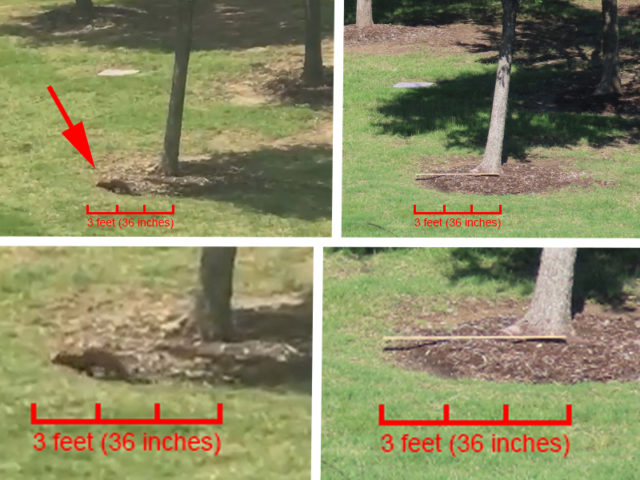
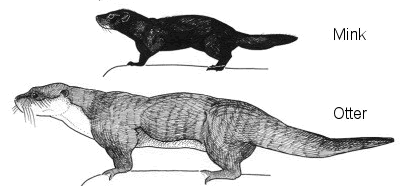
The final piece of the puzzle came with a closer examination of the video. When the animal raises its head and looks toward the camera, a small white throat patch is revealed. This feature is not present on River Otters, and it is also not present on ALL minks. It is fortunate in this case that our critter had this distinctive marking, allowing it to be positively identified as an American Mink.
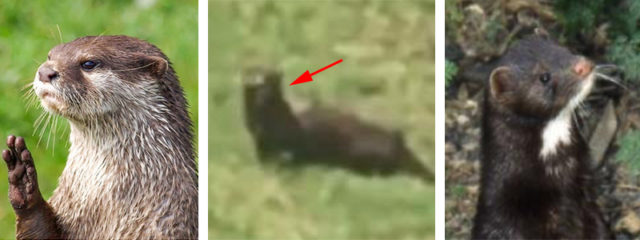

This last observation is perhaps the most exciting. For several years now it has become an annual event for a beautiful male Mandarin Duck to make an appearance in the metroplex. When the flamboyant duck first arrived in Dallas/Fort Worth late one winter a few years ago, he inspired a great deal of excitement among area wildlife photographers. They soon christened him with the very appropriate nickname, “Manny.” Here are a few links to news accounts of his visits…
Mandarin Ducks are not native to North Texas, but they are closely related to our native Wood Duck. The kinship is easy to see in the resemblance. Originally, Mandarin Ducks hailed only from far eastern Asia, but the bird’s beautiful plumage made them popular among collectors and other bird enthusiasts. The appeal is obvious, and it has helped this bird spread around the world in the collections of private owners. Free ranging Mandarins in North America–like the ones here in DFW–are escaped captives.
Over the years, the evidence seemed to suggested that there were actually more than one of these Mandarin Ducks moving about the metroplex, but it was hard to be certain. Then I was shown these pictures taken by sharp-eyed photographer, Alan Daniel. He spotted this wonderful little duck family swimming on a area lake. What we have here is proof positive that–at least in this instance–free ranging Mandarin Ducks are breeding in Dallas/Fort Worth.
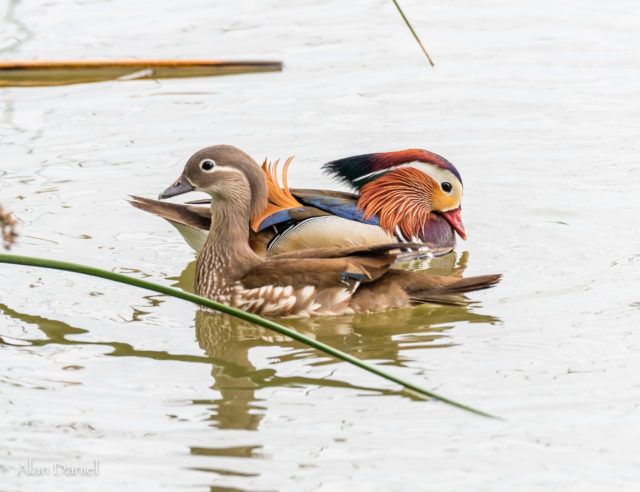


So, there you go. I hope you all enjoyed this! Keep the great observations coming! Drop me a line anytime at chris.dfwuw@gmail.com


